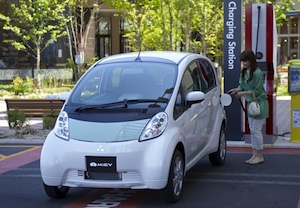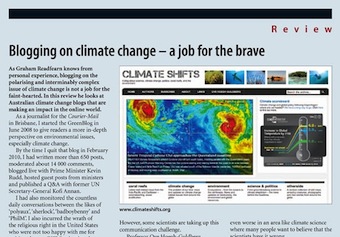LOTS of excitement after the boss of mining giant BHP Billiton gave a speech in which he said was in favour of a price on carbon and would quite like it if Australia’s Labor-led coalition government could get on with it.
Perhaps BHP Billiton CEO Marius Kloppers was still a little dizzy from his company’s recent $13.8 billion profit announcement, but here’s a bit of his speech.
The decisions that we are taking now on power production and building infrastructure will still be with us by the time we expect a global price for carbon to be in place. With about 90% of the carbon emissions from our electricity sector coming from coal fired power stations, Australia will need to look beyond just coal towards the full spectrum of available energy solutions.
Failure to do so will place us at a competitive disadvantage in a future where carbon is priced globally. My main point is a simple one – we need to anticipate a global price for carbon when taking decisions with long dated impact. The decisions we take now on power production will still be with us long after a global price for carbon is finally in place.
Editor of Climate Spectator, Giles Parkinson, declared Kloppers was showing “the sort of leadership from the biggest companies that has been so desperately lacking in the last 12 months”. Greens leader Bob Brown said Kloppers’ statement would add strength to the efforts by the new government’s climate change committee as it tries to find a route to a carbon price.
But BHP Billiton isn’t the only gigantonormously-really-quite-big mining company to have laid their carbon cards on the table in recent weeks. The Queensland Parliament’s Environment and Resources Committee is currently in the midst of an inquiry into renewable energy which currently accounts for just two per cent of all the state’s electricity.
Among the submissions to the inquiry is this from Rio Tinto Alcan and Rio Tinto Coal Australia.
It is widely understood that reducing greenhouse gas emissions will require a transformation in the way we produce and use energy. While renewables will play an important part, they must be seen as part of a portfolio of low emissions energy technologies (including nuclear, renewables and carbon capture and storage) that deliver increased energy efficiency. A carbon price on all terrestrial carbon is required to deliver that transformation.
So now Rio and BHP Billiton have joined the lengthening line of companies asking for a carbon price, such as electricity retailer AGL and technology company Siemens which were co-signatories of an open letter earlier this year.
Is this the bit where we point out that Liberal leader Tony Abbott has declared he’d never put a price on carbon, even if his policy announcements before the election seemed to declare the opposite?
 ACCORDING to Tony Abbott, only the coalition has a credible climate change policy to achieve a five per cent cut in Australia’s emissions of greenhouse gases by 2020.
ACCORDING to Tony Abbott, only the coalition has a credible climate change policy to achieve a five per cent cut in Australia’s emissions of greenhouse gases by 2020.
 WE’VE now had four major reviews into climate change science, all of them prompted and demanded by deniers, sceptics, [insert appellation of choice here] or whatever other descriptor you choose.
WE’VE now had four major reviews into climate change science, all of them prompted and demanded by deniers, sceptics, [insert appellation of choice here] or whatever other descriptor you choose. CHEERS go to bloggers Tim Lambert at
CHEERS go to bloggers Tim Lambert at  LATE last year there was an
LATE last year there was an 